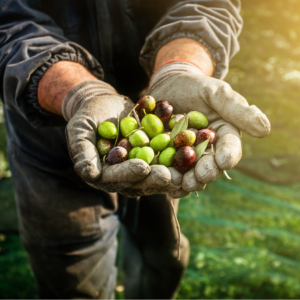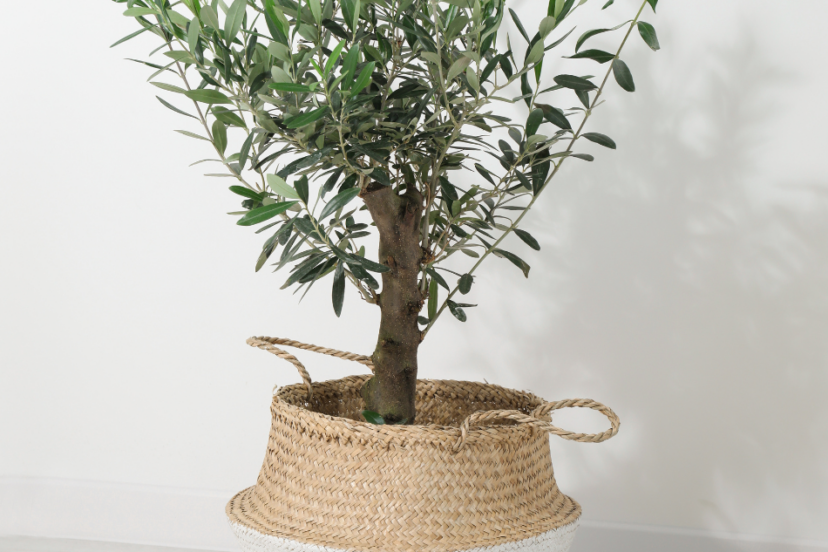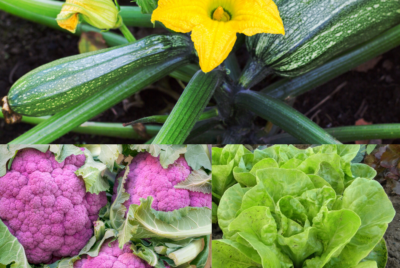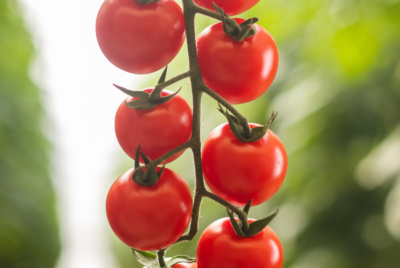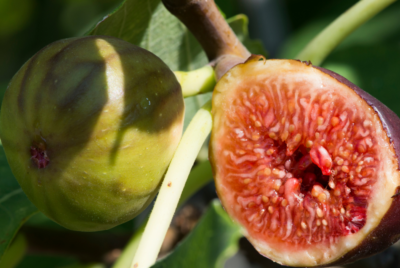Growing Olive Trees In Pots – A Gardener’s Guide
Many gardeners dream of cultivating their own olive trees to enjoy fresh olives and create a Mediterranean vibe in their backyard. With the right care and techniques, growing olive trees in pots is not only possible but also rewarding. In this guide, we will explore the important steps and tips to help you nurture healthy olive trees in pots, whether you have a small urban balcony or a spacious garden.

Key Takeaways:
- Choose the right pot: Select a large enough container with proper drainage holes to ensure the olive tree can thrive.
- Use well-draining soil: A mixture of potting soil, sand, and perlite will help prevent waterlogged roots and promote healthy growth.
- Provide adequate sunlight: Place the potted olive tree in a sunny location, preferably receiving at least 6-8 hours of sunlight daily.
- Regular watering: Olive trees prefer to dry out slightly between waterings, so water when the top inch of soil feels dry to the touch.
- Fertilize appropriately: Use a balanced fertilizer during the growing season to support the olive tree’s nutrient needs.
The Basics of Olive Trees
To cultivate olive trees successfully in pots, it is vital to understand the basics of these beautiful plants. From selecting the right type of olive tree to considering key factors for their growth, every aspect plays a crucial role in their care and maintenance.
Types of Olive Trees for Pot Cultivation
To start growing olive trees in pots, it’s vital to choose the right variety that thrives in containers. Some popular choices include Arbequina, Kalamata, Frantoio, Leccino, and Picholine. The size, flavor, and adaptability of these varieties make them ideal for pot cultivation. The key is to ensure they receive ample sunlight and well-draining soil.
| Arbequina | Kalamata |
| Frantoio | Leccino |
| Picholine |
Key Factors to Consider
Any successful pot cultivation of olive trees relies on several key factors. Ensure the pot size is suitable for the tree’s growth, provide well-draining soil, place them in a sunlit spot, and water them sparingly. After all, olive trees prefer drier conditions to thrive and produce flavorful fruits.
Some additional factors to consider include the fertilization needs of olive trees, pruning to maintain shape and size, monitoring for pests and diseases, and overwintering strategies. After all, these steps are crucial for the overall health and productivity of your olive tree.
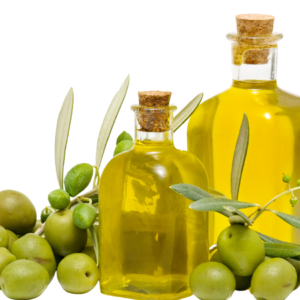
Step-by-Step Guide to Planting
| Choosing the Right Pot | Soil and Planting Techniques |
Choosing the Right Pot
While selecting a pot for your olive tree, opt for one that is at least 2-3 times larger than the root ball of the tree. Make sure the pot has drainage holes to prevent waterlogging, which can harm the roots.
Soil and Planting Techniques
While planting your olive tree, use well-draining soil mixed with compost. Ensure the tree is positioned at the same depth as it was in the nursery pot. Water thoroughly after planting, and place the pot in a sunny spot.
Plus, avoid overwatering your olive tree as it can lead to root rot. Additionally, fertilize your tree regularly to promote healthy growth and prune it as needed to maintain its shape and encourage fruit production.
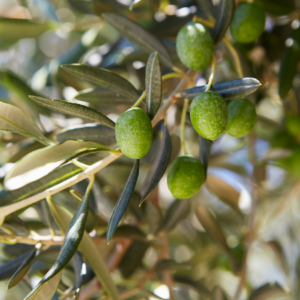
Maintenance Tips
Now that you have successfully planted your olive tree in a pot, it’s important to keep up with its maintenance to ensure healthy growth and a bountiful harvest. Here are some necessary tips to help you care for your potted olive tree:
- Watering: To thrive, olive trees need well-draining soil. Water your tree deeply but infrequently, allowing the soil to dry out between waterings. Avoid waterlogging, as it can lead to root rot.
- Feeding: Fertilize your olive tree sparingly with a balanced fertilizer in the spring. Avoid excessive nitrogen, as it can hinder fruit production.
- Pruning: Prune your olive tree in late winter to early spring to shape it, remove dead or damaged branches, and promote new growth. Be sure to sterilize your pruning tools to prevent the spread of disease.
Watering and Feeding Your Olive Tree
Now, for watering and feeding your olive tree, remember that consistency is key. Water deeply but infrequently, and fertilize sparingly with a balanced fertilizer in the spring. This will help your olive tree thrive and produce healthy fruit.
Pruning and Winter Care
The best time to prune your olive tree is in late winter to early spring. This is when the tree is dormant, allowing for optimal healing after pruning. Remove any dead or diseased branches, shape the tree for better sunlight exposure, and promote new growth. Winter care is crucial to protect your olive tree from frost damage, so consider moving it to a sheltered spot or insulating the pot during cold spells.
To maintain a healthy and productive olive tree in a pot, it’s necessary to follow these maintenance tips diligently. By providing the right care in terms of watering, feeding, pruning, and winter protection, you can enjoy the beauty and bounty of fresh olives from your own home-grown tree. Thou, a well-maintained olive tree will reward you with years of beauty and delicious fruit.

The Pros and Cons of Potted Olive Trees
After deciding to grow olive trees in pots, it’s imperative to weigh the advantages and disadvantages. Here’s a breakdown of the pros and cons to help you make an informed decision:
| Pros | Cons |
| Olive trees are adaptable and can thrive in containers. | Root restriction in pots may limit the tree’s growth potential. |
| Portability – You can move potted olive trees to areas with ideal sunlight and protection from harsh weather. | Olive trees in pots require more frequent watering and monitoring of soil moisture levels. |
| Control – Easier to maintain soil quality and drainage in pots. | Potted olive trees are more susceptible to temperature fluctuations. |
| Space Saving – Perfect for small gardens, balconies, or patios. | Regular repotting and root pruning are necessary to prevent pot-bound roots. |
| Decorative – Potted olive trees add a touch of Mediterranean charm to outdoor spaces. | Containers may not provide sufficient insulation during extreme weather conditions. |
| Harvesting Convenience – Easier to protect fruits from pests in pots. | Overwatering can lead to root rot in potted olive trees. |
While there are challenges to growing olive trees in pots, the benefits can outweigh the drawbacks with proper care and attention. Remember to provide adequate sunlight, well-draining soil, and regular fertilization to ensure your potted olive tree thrives. Happy gardening!
To wrap up
From above, cultivating olive trees in pots can be a rewarding experience for any gardener. With the right care and attention to soil, water, and sunlight, you can enjoy beautiful olive trees thriving in your own garden or balcony. Remember to choose the right variety for your climate, provide adequate drainage, and prune regularly to keep your olive tree healthy and productive. Happy gardening!
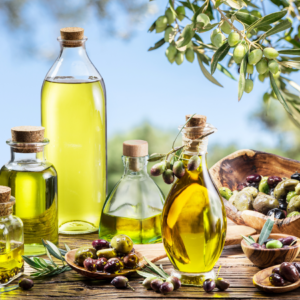
FAQ
Q: Can olive trees be grown in pots?
A: Yes, olive trees can be successfully grown in pots as long as they are provided with the right conditions and care.
Q: What type of pot is suitable for cultivating olive trees?
A: Use a large, sturdy pot with good drainage to plant olive trees. Terra cotta or ceramic pots are ideal choices.
Q: How often should olive trees in pots be watered?
A: Water your potted olive tree regularly, allowing the top inch of soil to dry out between waterings. Avoid overwatering.
Q: Do olive trees in pots need special fertilization?
A: Yes, olive trees grown in pots benefit from regular fertilization during the growing season. Use a balanced fertilizer formula for best results.
Q: Should potted olive trees be pruned?
A: Prune your potted olive tree in late winter or early spring to maintain its shape and encourage new growth. Remove any dead or damaged branches as needed.
Top Tips for Growing Peach Trees in Pots
Unlocking the Secret To Growing Fig Trees in Pots
Growing a Pomegranate Tree in a Pot
How To Successfully Grow Pear Trees in Pots – A step-by step Guide.
Complete Guide to Growing Fig Trees in Containers
